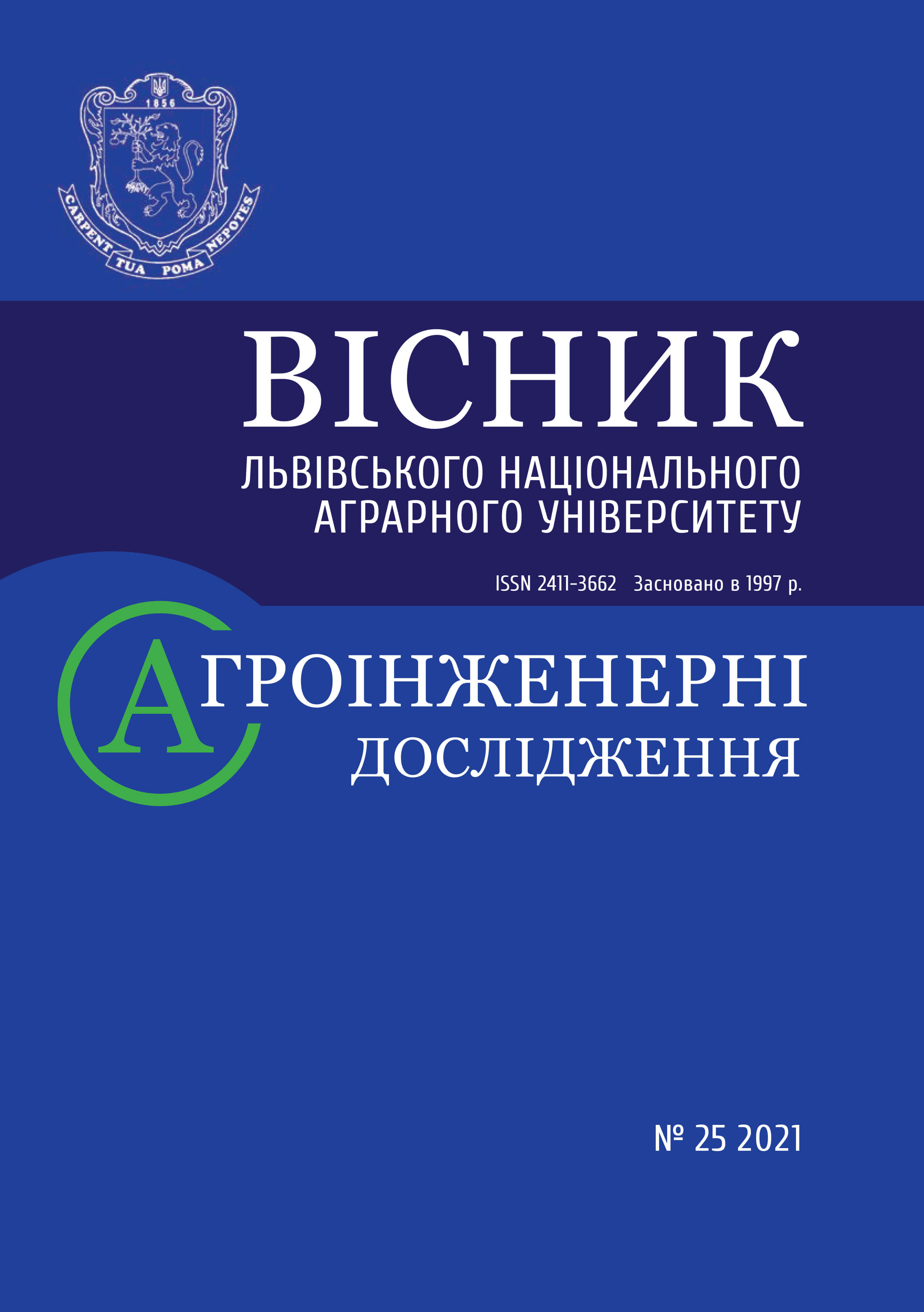Electrochemical regularities of the corrosion-mechanical fracture of titanium alloys
DOI:
https://doi.org/10.31734/agroengineering2021.25.113Keywords:
titanium alloys, corrosion process, electrode potential, polarization, repassivation, deformation, mechanism, electrochеmical kineticsAbstract
The mechanism and kinetics of corrosion-fatigue fracture of titanium alloys of different phase composition (a, pseudo-a, a+b) are considered using the electrochemical investigations, namely the change of electrode potential E during specimens deformation (dependences E–lgN), external polarization. The electrochemical processes on the fresh surface (FS) for time t = 5×10-3 s of their interaction with sodium chloride solutions of different concentration (0.1; 0.5; 1.0 and 1.5N solution) are studied. The FS potential of titanium alloys for the time of formation t @5×10-3s shifts into cathodic region of values and approaches to the reverse potential of anodic reaction Ti+H2O=TiO++2H++ , j°a=-1.31V ambiguously depends on Cl--ions concentration in the range from 0,1 to 1,5N NaCl solutions. In the first seconds, repassivation of the surface occurs by the linear law, later - by the exponential dependence, and finishes completely to 1 hour. The main stages of corrosion fatigue of titanium alloys of different structural and phase state have been indentified, on the basis of the correlation changes of the surface and the electrode potential. It has been shown that FS of the alloys demonstrates all the properties of the material that can pass into the passive state. Activation of the alloy surface is accompanied by significant discharge of the electrode potential (–1,2 V) and a sharp increase of current (159 А/m2). The repassivation is characterized by a three-stage change of both the potential and the current: existence of the period after surface activation, when the potential changes slightly and lasts from 0.01 to 0.02s; decrease by the linear law in the first seconds; retardation and stabilization. The first period is most clearly observed on the curve “time vs passivation current”. Time of almost constant current (up to 0.01 to 0.02s) does not change under cyclic deformation effect. The test results, presented in semi logarithmic coordinates (dependences E-t and i-t) show that the current changes more significantly with time than the potential as well as differentiation of curves under deformation effect is more clear in the investigated environment. The character of i-t curves changes in deformation and without deformation is similar. However, under the effect of the last one, a more rapid decrease of current and its stabilization take place. The deformed alloy passes into a passive state more quickly than the undeformed one. The variation of the curve “current–time” with deformation and without deformation is the same, whereas, under the deformations influence the current decreases more rapidly. The kinetics and the mechanisms of corrosion-fatigue fracture of titanium alloys are analyzed.
References
Bard, A. G., & Stratmann, M. (Eds.). (2003). Encyclopedia of electrochemistry. Vol. 4: Corrosion and Oxide Fils. Weinheim (Germany): Wieley-VCH.
Dmytrakh I. M., Syrotiuk A. M., Rusyn B. P., Lysak Yu. V., & Vainman A. B. (2006). Stvorennia suchasnykh metodiv tekhnichnoii diahnostyky pratsezdatnosti system parovodianoho traktu enerhoblokiv TES. Problemy resursu i bezpeky ekspluatatsii konstruktsii, sporud i mashyn: Zb. naukovih statei (pp. 128–132). Kyiv: In-t electrozvariuvannia im. Patona.
Dmytrakh, I. M., & Panasiuk, V. V. (1999). Vplyv koroziinykh seredovyshch na lokalne ruinuvannia metaliv bilia kontsentratoriv napruzhen. Lviv: NAN Ukrainy, Fiz.-meh. in-t im. H. V. Karpenka.
Dmytrakh, I. M., Syrotiuk, A. M., & Leshchak, R. L. (2020). Ruinuvannia ta mitsnist trubnykh stalei u vodnevmisnykh seredovyshchakh. Lviv: Prostir-M.
Kalakhan, O. (2002). Elektrokhimiia koroziino-vtomnykh protsesiv tytanovykh splaviv. Visnyk Lvivskoho universytetu. Ser. him., 42, 175–178.
Kalakhan, O. S. (2002). Vplvv deformatsii tytanovykh splaviv na kinetiku utvorennia zakhysnykh oksydnykh plivok. Fiz.-him. mekhanika materialiv. 3(1), 172–176.
Kalakhan, O. S. (2003). Kinetic regularities of electrochemical processes of titanium alloys corrosion fatigue. Fiziko-khimicheskaya mekhanika materialov, 39(5), 14–27.
Kalakhan, O. S. (2003). Kinetic regularities of the electrochemical processes of corrosion fatigue in titanium alloys. Materials Science, 39 (5), 615–628.
Nazarchuk Z. T. (Ed.). (2017). Elektrokhimichni metody monitorynhu dehradatsii materialu konstruktsii. Nazarchuk Z. T. (Ed.), Tekhnichna diahnostyka materialiv i konstruktsii: dovidn. posib. (Vol. 6, 302). Lviv: Prostir-M.
Pokhmurskii, V. I., Kalakhan, O. S., & Okhota, H. H. (2005). Corrosion Electrochemical Behavior of Surface-Modified Titanium Alloys. Materials Science, 41 (1), 1–6.
Pokhmurskiy,V. I., Kalakhan, O. S., & Yaremchenko N. Ya. (1982). A. s. 954859 (SSSR). Sposob ispytaniya materialov na ustalost. Opubl. 30.08.82, Byul. No. 26.
Pourbaix, M. (1966). Atlas of Electrochemical Equilibria in Aqueous Solution. New York: Pergamon Press.
Romaniv, O. N. (1990). Novyie podhodyi k otsenke korrozionnoy ustalosti metallov. Korroziya i zaschita ot korrozii (Itogi nauki i tehniki). Moskva: VINITI.
Ruskol, Yu. S. (1989). Titanovyie konstruktsionnyie splavyi v himicheskih proizvodstvah: sprav. izd. Moskva: Himiya.


